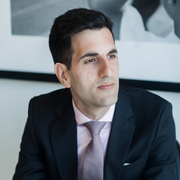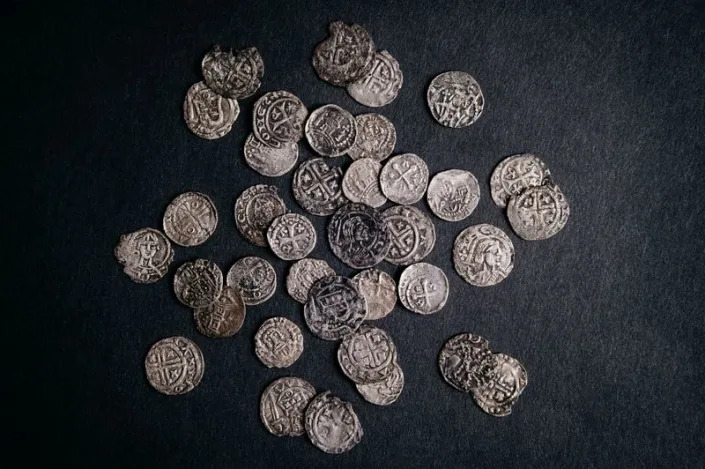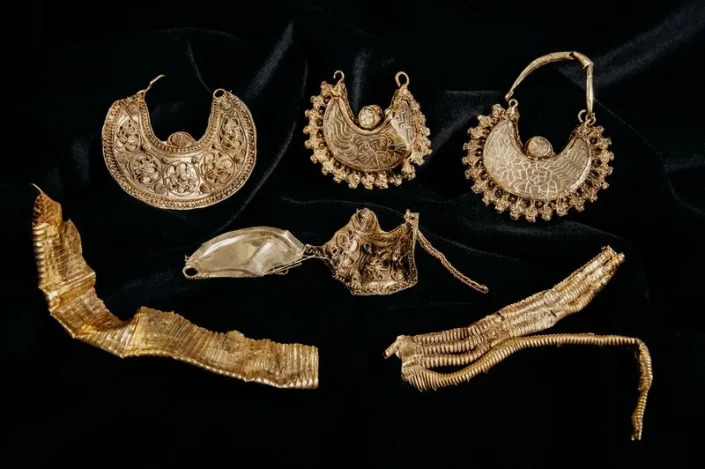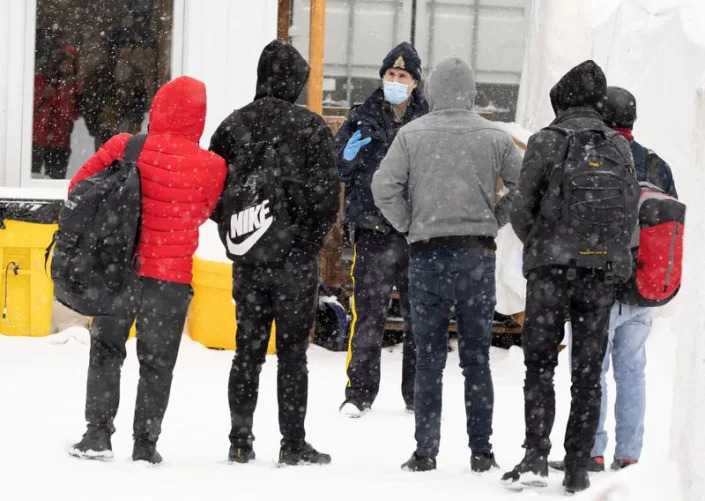Canada Should Not Be Welcoming Nakba Deniers: Protesting Caroline Glick’s Talk in Toronto

In February, I organized a small demonstration to protest a talk that was being given by Israeli Nakba denier Caroline Glick, in Toronto. Unsurprisingly it was being hosted by the Canadian Antisemitism Education Foundation (CAEF) and other Israeli ultranationalist right-wing groups that support such denialism—falsely promulgating the view that hundreds of thousands of Palestinians were not displaced from their homes to establish the Israeli state (1948), while approximately 15,000 Palestinians were massacred for the same reason.
Like Glick, some go so far as to say that Israelis, and not Palestinians, are indigenous to the Palestinian lands that Israel illegally occupies. In her pseudo-historical book, ‘The Israeli Solution: A One-State Plan for Peace in the Middle East’, Glick writes:
“If they [Palestinians] acknowledge the validity of the region’s Jewish roots, they will be forced to recognize that the Jews rather than the Palestinian Arabs are the indigenous people of the land. …
“For the Palestinians, even the most basic recognition of reality—that Israel is a Jewish state—threatens their entire edifice of lies. One must refuse to recognize the existence of the Jewish people, they say, for once you recognize the Jewish people, you necessarily recognize their history, which in turn requires you to recognize that the Jews are the only nation that has ever claimed the Land of Israel as its homeland, and the only people that has ever claimed Jerusalem as its capital.”
On the evening of the demonstration, there was a bad snowstorm. It was also very cold. I wasn’t sure how many exactly would be in attendance. But three fellow Palestinian allies did show. Except for myself, we were all Jewish. This seemed to have confused some attendees who could not process that, yes, some Jews do not—and rightfully so—support the Israeli state and stand in solidarity with Palestine, in virtue of our shared humanity.
It should be stressed that when it comes to such solidarity it’s also our shared humanity, from which emanates the universal impulse against oppression in all its forms, that matters most.
For the same reason, I replied to a security guard at the event (taunting us) “what does it matter?”, when he inquired as to whether I was Jewish. Moreover, if you care to ensure dignity for all in this world you side with Palestine. You do not side with Israel, which persecutes Palestinians for simply being Palestinian.
Taking this position does not at all depend on one’s ethnicity, religion or race. It’s grounded rather and an expression of genuine respect for all human life. That’s why Israel’s oft-cited complaint that it’s “antisemitic” to challenge or oppose is entirely spurious.
We were outside the speaking venue for not terribly long. Less than an hour. But during that time it seemed most people who were attending the event were arriving and there were many. We were surely outnumbered by them and anyone seeing us could immediately recognize that. This seemed to have emboldened those who opposed our general anti-Israeli apartheid stance, let alone opposition to Glick herself.
One way this was manifest was by how we were often addressed by the attendees, namely with spite and contempt. People swore at us, and called us names like “scumbags” and “terrorists.” We didn’t even have to say anything for them to attack us this way. For the most part, we remained silently standing during the demonstration, as if keeping a vigil. The signs we held in solidarity with Palestine, against Glick and Israeli oppression, were enough to rile our attackers.
In some sense, none of this is all that surprising. CAEF and those who support it are anti-Palestinian. We were raining on their parade by protesting at their event where they were expecting to see Glick echo their feelings and ideas that “justify” Israel’s harm against Palestinians, without being reminded of the wrongness of it. Nobody after all wants to think of themselves as supporting harm, let alone the egregious human rights violations that Israel routinely commits against the Palestinian people.
There were however two moments during the demonstration that admittedly surprised me. The first was when a lady expressed utter disbelief—as if having discovered some troubling secret instead of what’s now widely known—that Israeli apartheid exists.
“Are you crazy?” she asked us, after noticing an anti-Israeli apartheid sign one of us was holding. “The only cities that don’t allow others are the Arab cities where it says ‘no Jews allowed’.”
In reality, however, Israel prohibits Palestinians from venturing anywhere near certain parts of cities or, more generally, geographies within and outside the occupied territories. As B’Tselem notes:
The restrictions on movement within the West Bank have institutionalized the separation between Israeli settlers and Palestinians. The main network of roads was built to serve settlers, on land expropriated from Palestinians. Israel completely prohibits Palestinians from using about 40 kilometers of these roads – including almost eight kilometers of Route 443 and almost seven kilometers within the city of Hebron, near the settlements established there. Another 20 kilometers of these roads are partially off limits to Palestinians.
A clear and recent reminder of this was shared by Palestinian human rights defender, Issa Amro, in an interview with Democracy Now!, where he recounts having been assaulted by an Israeli soldier (entirely unprovoked) and while Amro was being mindful not to walk on areas strictly designated for Israelis.
The second surprising event was meeting a gentleman attending the event who, straight-faced and without compunction, told us: “These so-called ‘Palestinians’ are not a distinct ethnic group. They are colonial occupiers.”
Familiar to me are defenders of Israel who deny that the state is committing crimes against humanity and oppressing the Palestinian people.
But till meeting that gentleman, I had never heard Palestinians so absurdly (and offensively) being referred to as “colonial occupiers”, as if their homes—from which they are under constant threat of being illegally evicted by Israel—were seized by force. Where was this person, I thought, getting his “history” from? Where is what he was saying documented by any legitimate source? How long has he been believing this lie and why has no one in Canadian society, which champions itself as one that welcomes a plurality of viewpoints, corrected him?
Then again we know and illuminated well by the Independent Jewish Voices (IJV) report Unveiling the Chilly Climate: The Suppression of Speech on Palestine in Canada (authored by Sheryl Nestel and Rowan Gaudet), Canada is not a hospitable place to talk about the truth about Palestine, including universities that are supposed to be models of free speech and dialogue.
The ignorance of the gentleman recalls for me Regavim, the pro-Israeli settlement group that petitions the Israeli government to expedite the eviction of Palestinians from their homes in the West Bank and that visited Toronto late last year to endorse such criminality (I wrote about my experience, at that time, of attending one of its talks and then protesting one of its talks for this publication).
Like Regavim’s his view of reality is inverted such that Palestinians, not Israelis, are illegally occupying or, as I heard at the Regavim talk I went to, “squatting” on land that does not belong to them. This is not simply preposterous, something we can shrug off as totally at odds with the fact that it deserves no attention. Rather it plays a role within the larger Israeli ultranationalist or Zionist discourse, namely to deny the indigeneity of Palestinians.
Convincing people of this, which is increasingly less likely as the world thankfully is learning and understanding the actual history of Palestine, makes it easier for them to see Israel as the “good guy”, “victim”, or “oppressed party” rather for what it really is: a colonial force engaged in Palestinian erasure. Sadly it makes sense that people like the gentlemen attend talks by Glick. What they all have in common is an interest in publicly spreading or endorsing disinformation to make the erasure easier. After all, if Palestine is the “colonizer” then what rational person would protest Israel acting to “secure” itself, violently wherever necessary, from it?
Studying philosophy taught me not just about different ways to look at the world. It also inculcated in me a certain attitude and which is classically embodied by Socrates: never assume to always know and be honest with yourself about your own ignorance. This can surely be hard for us. It’s not easy to think, at least very long, about the extent to which we have gaps in our knowledge, to hold mistaken beliefs (that we may discard one day with embarrassment after becoming more enlightened) and take pride in having access to “truth”—too complicated for others—but which is in fact wrong or a myth.
Engaging in deep reflection that helps us recognize this is good, as it allows us to attain a better understanding of our intellectual limitations. However where such activity is guided or informed by dishonest actors, such as Glick who distorts the truth about Palestine and Israel alike, we may be persuaded to accept erroneous views—pushing us away from understanding, be they of the aforementioned limitations or otherwise, and closer to falsehood.
It was in this direction I believe that one of the attendees at the event was trying to steer some of my fellow demonstrators. She asked them if they’d be willing to come to the event and “learn” what they didn’t already know. A similar question was asked by another woman to another fellow demonstrator at the Irwin Cotler protest I organized several weeks ago.
The presumption here is that we, as pro-Palestinian, are somehow ignorant and that the truth about Palestine and Israel alike is to be found inside the venue they’re inviting us into, in which some event (lecture, film screening followed by a Q&A, etc.) either refrains altogether from discussing the history of Palestine or, if it is, either warped or denied.
It’s almost as if we are, in religious terms, needing to be “redeemed” from being pro-Palestinian—the result of having not studied enough of the Zionist version of history that frames Palestinians as “uncivilized” and “terrorist” and their supporters as necessarily “antisemitic.”
It does not matter to the Zionist proselytizer that one might be well aware of facts, in accordance with what’s been documented by the United Nations and credible international human rights bodies the world over, that point directly to Israel’s criminality. For them, Israel can never fail to be “good”, Palestine “bad.” This dichotomy governs much of their thinking and by the same token why they see us, as outspoken allies of Palestine, as wrong. The Palestinian and their ally will always be a “problem” for them, promoting awareness of material (e.g. Palestinian dispossession) and not imaginary states of affairs (e.g. Israelis as indigenous to geographies they illegally occupy). This unscientific viewpoint, interestingly, squares well with the lady who invited the demonstrators to the event. She told them that they are being vaccinated against COVID-19 as “proof” of their small-mindedness.
Invitations like that of the lady also have an absurd element. They resemble someone convicted—through genuinely fair court proceedings and with overwhelmingly credible evidence—asking others to refrain from judgment, as if the truth about what they did, their moral character, the crime they committed, etc. did not already come to light during the proceedings. Why would anyone with knowledge of such truth need to still suspend judgment? What function or purpose would that serve, apart from perhaps an attempt by the convicted—given the opportunity—to persuade their audience to adopt a narrative based on lies, questionable information and non-facts?
That Glick’s talk and other’s like it are allowed to take place in Toronto publicly, without any mainstream media attention, says that the city is, first, still not safe for Palestinians and, second, where anti-Palestinian racism is tolerated. Imagine instead of being a Nakba denier Glick was a Holocaust denier. Without question she would’ve been condemned by the mainstream media, elected officials, the venue that hosted her sharply criticized—and rightfully so. We must take Holocaust denialism seriously because it emboldens antisemites and Nazi ideologues. There is absolutely no place for that.
Nakba denialism ought to be taken as seriously as Holocaust denialism. Yet, that is seldom seen. Mainstream media for example hardly ever talks about Nakba denialism and groups like CAEF continue to endorse such denialism through what it publishes on its website, as well as the events it hosts publicly.
This emboldens anti-Palestinian racists—be they Zionist, Christian Evangelical, what have you—to promote a view of the world where the ongoing legacy of the Nakba, from Israel’s bombing and blockade of Gaza to the state’s destruction of Palestinian agriculture and evictions of Palestinians in the West Bank, as simply “imaginary” (not to mention criminal).
This is more than a cruel lie. Downplaying the suffering of people to the point where you refuse to acknowledge its happening, knowing full well it is and by an oppressive power to boot, is at once to despise them.
If Canada is sincere about helping achieve Palestinian justice it must commit itself to fund public media that routinely covers Nakba denialism. This of course includes events, such as Glick’s speaking engagement in Toronto, that features purveyors of it while (more generally) highlighting the destructive anti-Palestinian racism that motivates them. At present this is something the Canadian Broadcasting Corporation (CBC), the darling of liberals and “progressives”, consistently fails to do—despite being Canada’s main publicly-funded media source. Furthermore, it’s in the Canadian public interest to know that Nakba denialism pervades certain areas of Canadian society, including but not limited to the northern part of Toronto where I’ve been writing about it. Such denialism unnecessarily harms any decent society and so Canadians are entitled to know where it exists so they can rightfully challenge it and prevent it from doing further damage.
The silence surrounding Nakba denialism trivializes not only Palestinian history but how the Nakba reverberates today, through the senseless suffering, death and trauma of countless Palestinians—all at the hands of the Israeli state. Public media cannot be allowed to keep that in the dark. Its role, in large part, is to provide a comprehensive picture of the world we’re living in, however much commercial or private media falls short of that.
When it comes to Nakba denialism that picture surely will not flatter the likes of Glick. But that’s a good thing. There’s no truth in anti-Palestinian racism.
Just hate.























